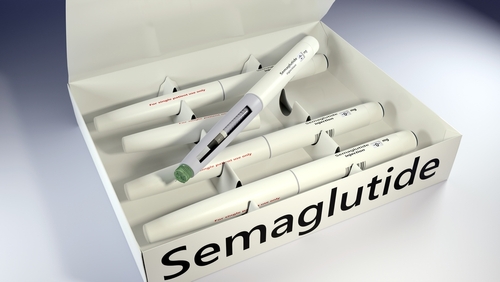
Aortic valve disease is associated with more than 17,000 deaths annually. The mortality of patients with symptomatic severe aortic stenosis (AS) is as high as 50% at year 1. Patients of European heritage with chronic kidney disease (CKD) have an increased risk of developing calcific AS. Data from previous studies have demonstrated a higher prevalence of AS in white adults, as well as increased AS-associated interventions in whites compared with Black patients.
Researchers have hypothesized that renal dysfunction may promote aortic valve calcification leading to AS by inducing high rates of inflammation, oxidative stress, and derangements in calcium and phosphorus homeostasis. However, there are few data available on whether the association between CKD and AS blunts the strong relationship between race and calcification of the aortic valve. Aamir Husain, MD, and colleagues conducted a study designed to compare the progression of AS between white and Black patients in a CKD population and to determine whether the genetic link between white adults and progression of AS remains among patients with CKD. Results were reported in Cardiovascular Diagnosis and Therapy [2020;10(1):24-30].
Patients with advanced CKD who were referred to the University of North Carolina Chapel Hill Cardiorenal Clinic from 2006 to 2016 for pre-operative kidney transplant evaluation were examined for aortic valve disease. All patients referred to the clinic were either receiving maintenance dialysis or had a glomerular filtration rate <25 mL/min/1.73 m2. Inclusion criteria were documented AS (mild, moderate, or severe) at baseline over their 10-year trajectory by electrocardiography report. Also included were patients with a peak transvalvular velocity ≥2 meters per second (m/s) at any point during this time.
The researchers compared rates of change of three indices of AS severity (mean gradient, aortic valve area [AVA], and aortic valve velocity) between white and Black patients. The overall and race-stratified rate of progression for each index, adjusted for age, sex, smoking status, dialysis, and baseline cholesterol, were estimated using mixed effects linear models with repeated measures.
Of 1283 patients in the cardiorenal clinic’s database, 148 met the inclusion criteria of having at least mild AS or a peak aortic transvalvular velocity of at least 2 m/s at any point during their follow-up trajectory, and at least one echocardiogram available for interpretation. Of those 148 patients, 93 were Black, 47 were white, and eight were other races. This resulted in 408 eligible transthoracic echocardiography (TTEs).
Patients had a median two visits and 101 patients (68%) had at least two TTEs during the study period. Among white patients, median time between TTEs was 362 days compared with 434 days for Black patients (P=.03). However, the median number of TTEs were the same between the two groups (median two).
Overall, median age in the study population was 58 years, 54% were male, 66% were Black, and 79% were on either hemodialysis or peritoneal dialysis. At baseline, 56% had diabetes, 100% were hypertensive, and 20% had either mild or moderate AS. Twenty-eight patients underwent renal transplant during the study period. The mean transvalvular gradient was 9 mmHg, the average estimated AVA was 1.8 cm2, and the average transvalvular velocity was 2.0 m/s at the initial visit.
Compared with the white patients, Black patients were of similar age at first echocardiogram (58 vs 60 years), more likely to be female (54% vs 30%; P=.008), and more likely to be on dialysis (84% vs 66%; P=.01). The two groups were similar in proportions of diabetic patients (59% vs 49%), smoking (43% vs 60%), hypertension (100% vs 100%), and phosphorous levels (5.2 vs 5.0). Total cholesterol and high-density lipoprotein cholesterol were higher in Black patients than in white patients (175 vs 148; [P=.02] and 47 vs 40; respectively). At baseline, there were no differences between the two groups in the prevalence of AS and no significant differences in baseline values of the three AS indices between the two groups.
In measures of progression, mean transvalvular gradient increased at 1.26 mmHg per year (95% confidence interval [CI], 0.64 to 1.88), estimated AVA decreased at –0.07 (95% CI, –0.09 to –0.04) m2 per year, and peak transvalvular velocity increased at 0.06 (95% CI, 0.02 to 0.10) m/s per year. Following adjustment for age, sex, smoking status, dialysis, and baseline total cholesterol, differences were minimal.
In white versus Black patients, mean gradient increased at 1.90 (95% CI, 0.79 to 3.01) mmHg per year versus 1.46 (95% CI, 0.79-2.14) mmHg per year; AVA decreased at –0.10 (95% CI, –0.15 to –0.05) m2 per year versus –0.08 (95% CI, –0.11 to –0.05) m2 per year; and transvalvular velocity increased at 0.11 (95% CI, 0.04 to 0.18) m/s per year versus 0.07 (95% CI, 0.03 to 0.11) m/s per year.
The researchers cited some limitations to the study including the single-center design and small sample size; the relatively young age of the study cohort; the majority of the population at baseline having mild AS rather than moderate or severe AS; and the pre-transplant evaluation possibly excluding otherwise sicker patients in the general CKD population.
In conclusion, the researchers said, “In this study investigating 148 advanced CKD patients who underwent serial echocardiography over a 10-year period, AS appears to progress at a faster pace in white patients compared to Black patients in each of the three AS indices (mean gradient, AVA, transvalvular velocity). These results suggest that the genetic predisposition for AS may be a strong risk factor for AS progression. Additional research is required to confirm the results of our study.”
Takeaway Points
- Researchers conducted a study to compare the progression of aortic stenosis between white and Black patients with advanced chronic kidney disease (CKD).
- The measures of interest were three indices of AS severity: mean gradient, aortic valve area, and aortic valve velocity.
- Study results suggested that progression of AS was more rapid in white patients compared with Black patients in each of the three AS indices.







 © 2025 Mashup Media, LLC, a Formedics Property. All Rights Reserved.
© 2025 Mashup Media, LLC, a Formedics Property. All Rights Reserved.